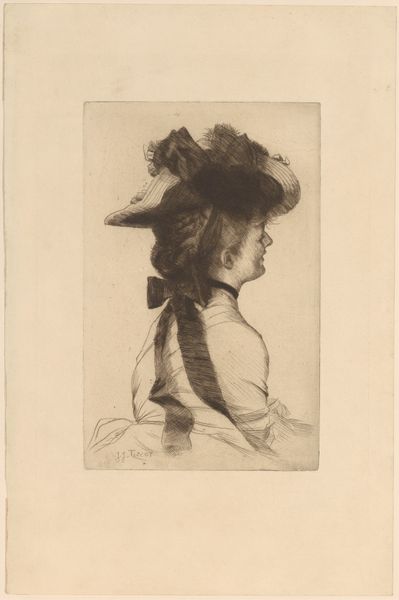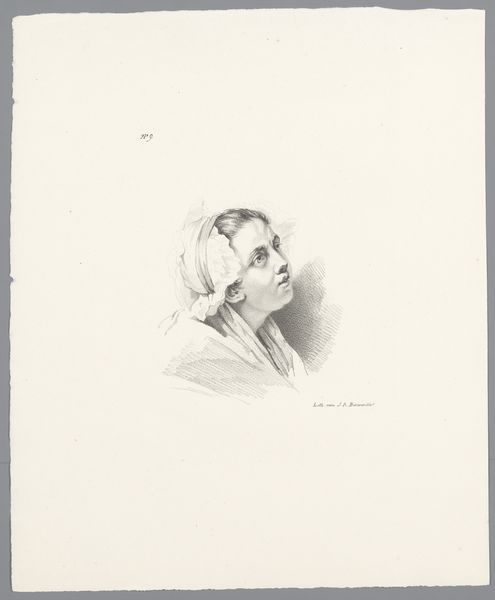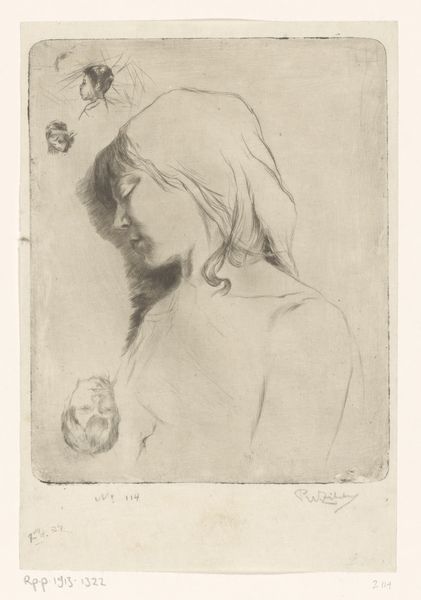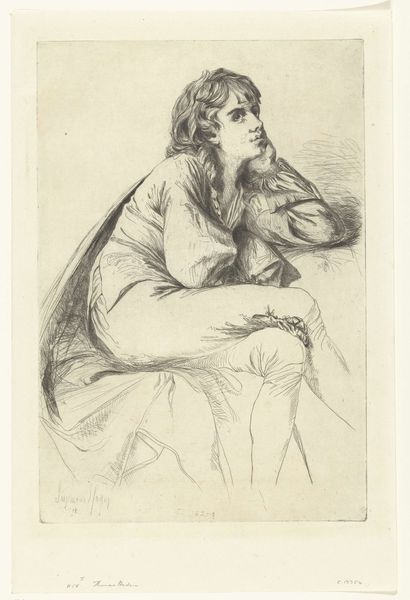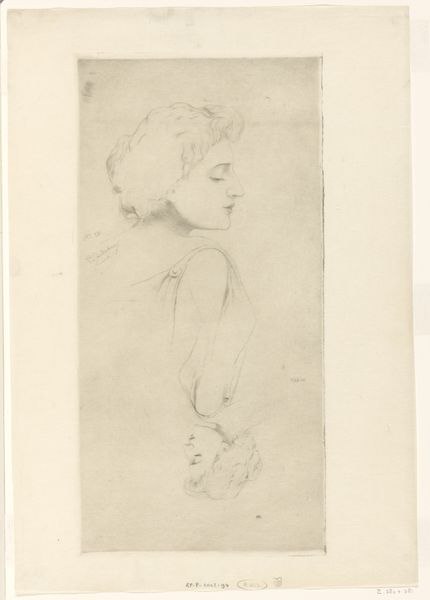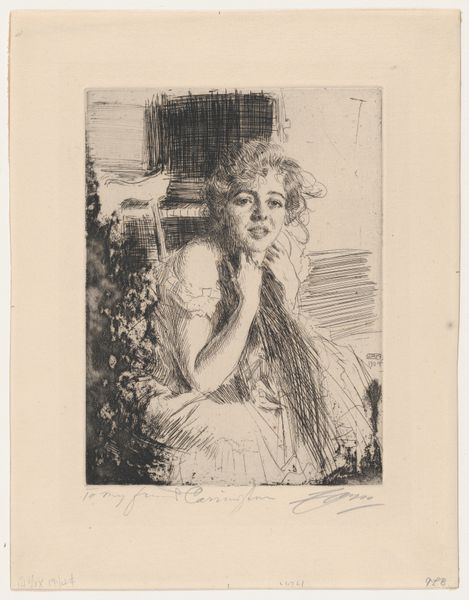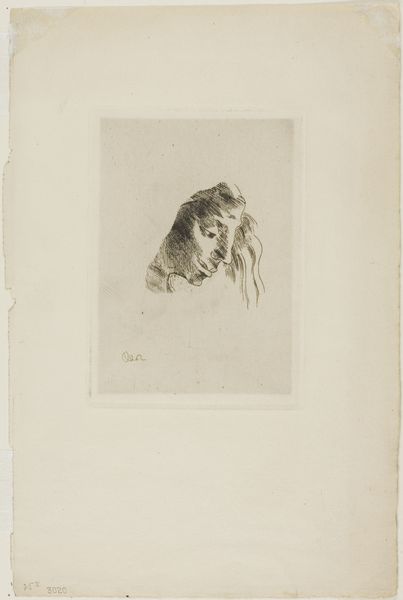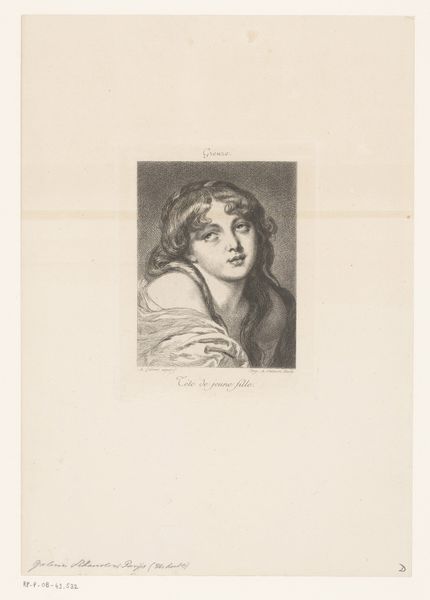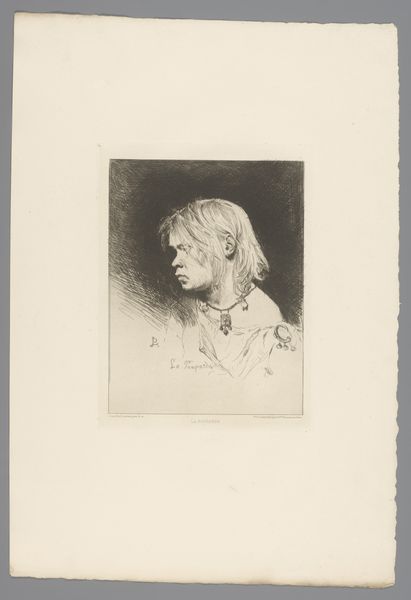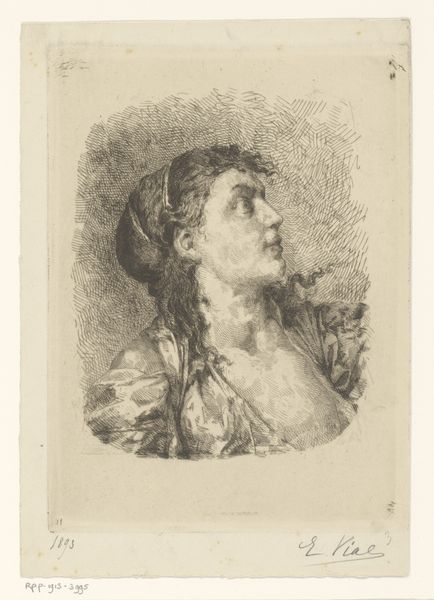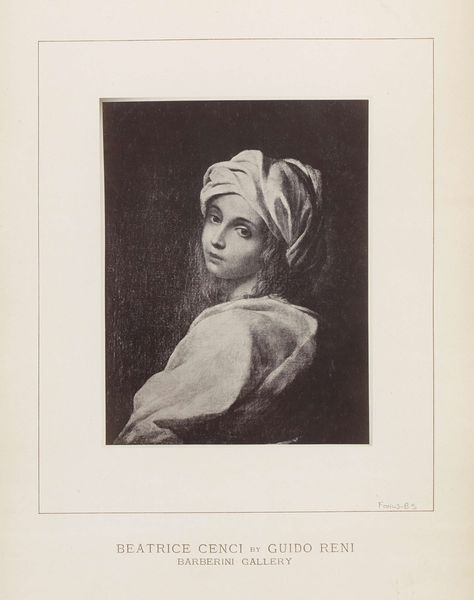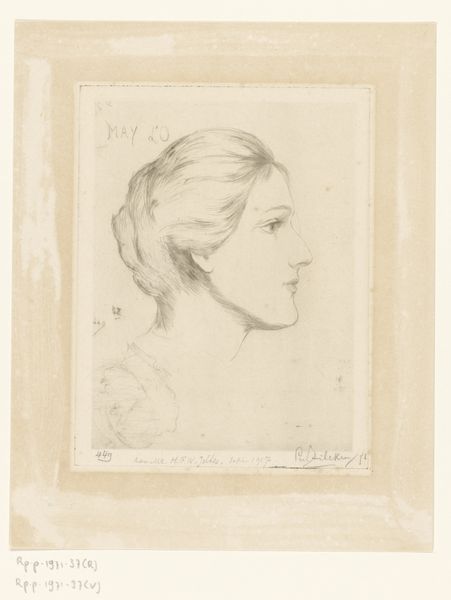
Dimensions: height 154 mm, width 116 mm
Copyright: Rijks Museum: Open Domain
Curator: This is "Head of a Young Woman, Facing Left," an engraving by Pierre Charles Ingouf, circa 1766. It currently resides here at the Rijksmuseum. Editor: The texture is quite striking. You can almost feel the roughness of the paper and see the delicate lines made to render the woman's face. The detail in the lace trim of her bonnet is amazing. Curator: Ingouf worked during a fascinating period when printmaking was both a commercial and artistic venture. Prints like this were often commissioned, bought, sold and traded, moving art objects around Europe. It reflects the growth of the middle class with disposable income seeking aesthetic engagement. Editor: I'm intrigued by the stark contrast of the dark shadow behind her head, juxtaposed with the delicate white of her cap. You can really sense the density and varying pressure in the marks made in the engraving process. How much time did that take to create, and who was she? What did this woman *do* all day? Curator: Well, we do not have an exact model of the woman. These portrait studies reflect academic conventions. They were often used to disseminate an artist’s particular style and technique. You know, the late 1700's was a real time of social upheaval with revolutionary thinking bubbling just under the surface. So works of art helped form and negotiate societal standards, including standards of beauty and expression. Editor: Hmm, interesting. While I'm keen to read into the history and all that contextual information, there is something haunting about the face of that young woman that is worth studying here too. Those wide eyes give you the impression of a world far beyond that print. To me, that stare really captures the anxiety of living. Curator: I hadn't thought about it that way, but looking at it now, I think you're right. It seems both tragic and triumphant to be caught in a historical shift. The politics of image are certainly at work here. Editor: Absolutely, an image as an object in history with inherent value is a point that connects history, materialism, process, making and, most importantly, experience together in a complex dialogue. Curator: Well put, that definitely offers new perspectives on understanding this artwork, thanks. Editor: My pleasure.
Comments
No comments
Be the first to comment and join the conversation on the ultimate creative platform.

